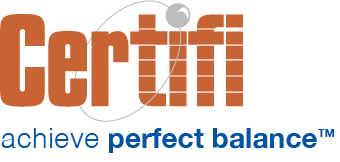Previously, we wrote about health equity, network adequacy, and essential community providers due to the proposed changes outlined in the 2023 Notice of Benefit and Payment Parameters Proposed Rules. Health and Human Services (HHS) recently released the final rules codifying some of those proposed rules.
Today, we’re going to review the requirements and impact of one of the final rules published in the 2023 Notice of Benefit and Payment Parameters Final Rules document. The rule establishes standardized plan options in the federal healthcare.gov health insurance exchange. The rule also applies to state-based exchanges that use the federal enrollment platform.
What does the final rule require of health insurers?
The final rule requires health insurers selling qualified health plans (QHP) on the federal enrollment platform to offer at least one standardized health plan at every metal tier and in every service area that the plan offers a non-standard health plan, beginning in 2023.
How has HHS defined standardized plans?
Standardized plans have the same maximum out-of-pocket limitations, deductibles, and cost-sharing features, making it easier for consumers to compare plans from different health insurers based on quality and premium costs. For example, all standardized Gold plans, excluding those issued in Delaware, Louisiana, and Oregon, will have a $2000 deductible, an $8,700 annual limit on cost-sharing, will have a $30 co-pay for a primary care visit, and pay 25% of emergency room services, among other standard cost-sharing designs. HHS set cost-sharing standards for Bronze, Expanded Bronze, Standard Silver, Silver 73, Silver 87, Silver 94, Gold, and Platinum plans. States like Delaware, Louisiana, and Oregon have existing cost-sharing requirements.
Why are standardized health plans necessary?
When the federal government first implemented the Affordable Care Act (ACA) rules, some states took the additional step of creating health insurance plan standards beyond what the ACA required. The federal government tentatively followed suit, recommending but not requiring standard plans. The Trump administration later removed that recommendation.
Many argue that standardizing health plans makes it easier for consumers to choose a plan. Because of the complexity of health plans, even slight cost-sharing differences can significantly impact a consumer. Those differences can often be difficult to identify for a consumer. As a result, creating standardized plans makes it easier for consumers to accurately estimate the total cost of health insurance across insurance plans.
How will individuals be able to view and compare standardized health plans?
Because these standard plans will be available on the federal healthcare.gov enrollment platform, consumers will shop for them on that platform. To help, the healthcare.gov site will use a differential display for standardized plans that makes it easier to compare plans based on differences in price and quality rather than cost-sharing. In the past, that differential display also meant providing information about the standardized plan concept to consumers.
What impact will this rule have on the number of plans available?
The final rule didn’t limit the number of non-standardized plans available, so some thought that may lead to an increase in plans. That increase could make it difficult for consumers to shop because they’d be faced with more choices. However, HHS decided not to limit non-standard plans, largely because it designed the standards based on the most popular plan designs selected. In effect, HHS didn’t believe standardizing plan design would lead to a proliferation of new plans.
However, HHS does agree that an increase in the number of plans available could be detrimental to enrollment. As a result, they indicated they may revisit limiting non-standard health insurance plans in the future.
What other considerations did HHS have as a result of public comments?
Part of the process of proposing and finalizing rules involves soliciting public comments. In the final rules, HHS responded to a number of those comments. Among them:
- Commenters believe that plan comparison isn’t difficult today given the already available amount of standardization. HHS disagreed, pointing out that there has been a proliferation of plans available on the exchange in recent years. HHS also noted that providing standardized plan options could improve consumer protections, helping improve access to some health services.
- Some commenters felt standard health plans limited innovation in plan design. HHS disagreed, finding that non-standard plans weren’t very innovative before this rule.
- Some commenters felt creating standardized plans would place an unnecessary burden on health insurers. Managing a diverse product portfolio would require more resources. HHS disagreed, pointing out that health plans could discontinue their non-standard products and conform with standards to minimize product designs. Plus, they could likely use existing provider networks for standard health plans, limiting the compliance burden.
- Some commenters wanted standardized plan options to be required in state exchanges as well. HHS disagreed, feeling states are more likely to understand the nuances and needs of their health insurance exchanges.
Certifi’s health insurance premium billing and payment solutions help health insurers improve member satisfaction while reducing administrative costs.



